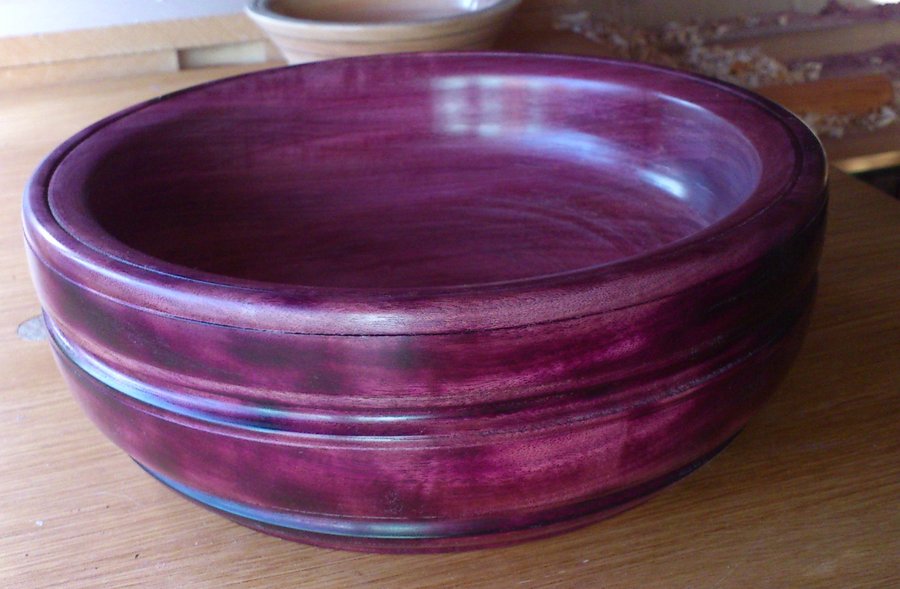
Purpleheart Wood Lumber information by FLORIDA TEAK
Trees grow to enormous heights of 170 ft with diameters to 4 ft (but usually 1.5 to 3 ft); boles are straight, cylindrical, and clear for 60 to 90 ft which is why you'll nearly always get totally clear boards of purple heart. It's a great tree that yields a lot of good lumber. Purple Heart Tree and wood Scan
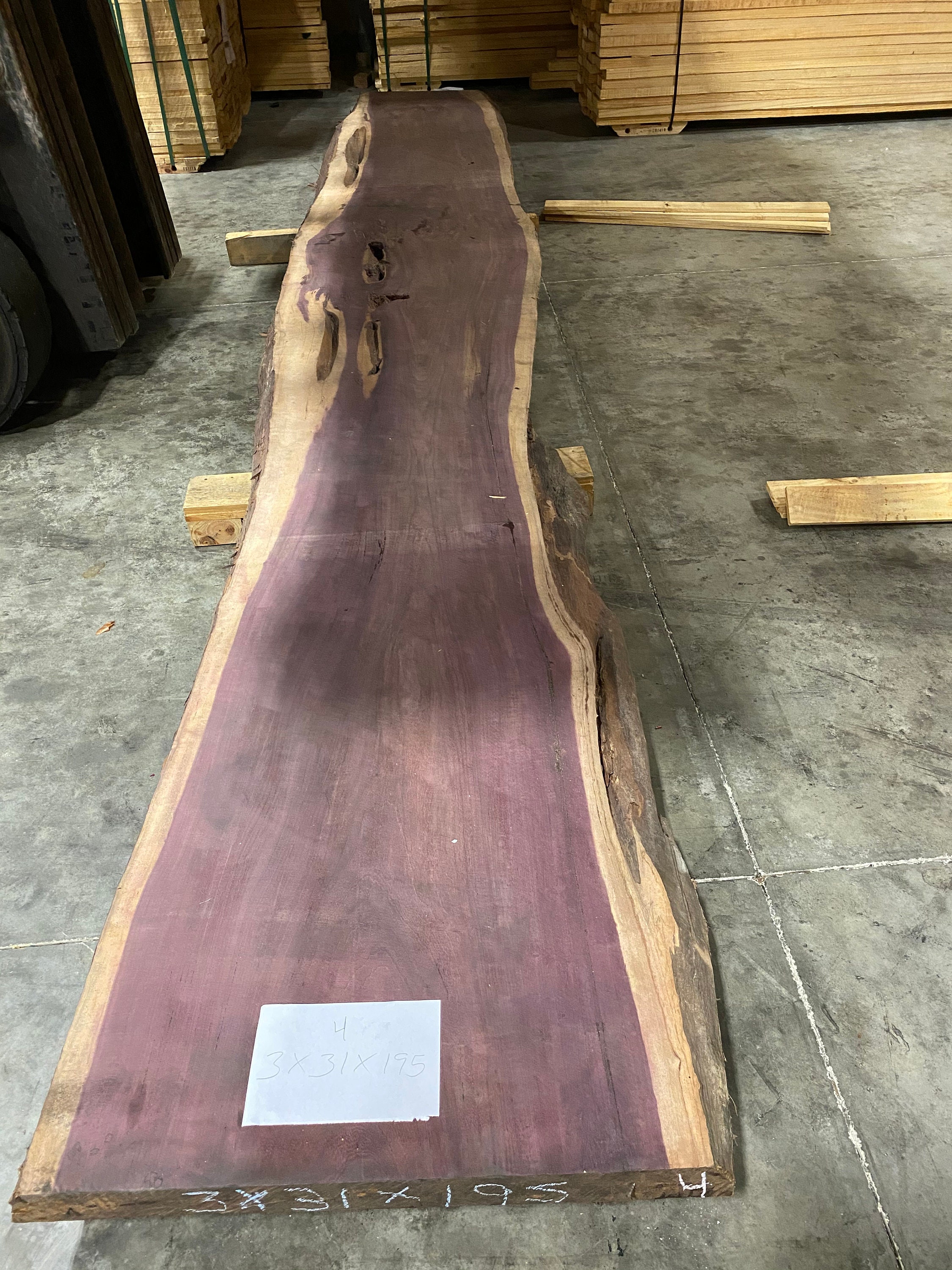
Live Edge Wood Slab Purple Heart Exotic Wood Etsy
Lumber Exotic Lumber Latin American Woods Purple Heart "Grain usually straight often with a fine curly figure. Fine texture. Moderately hard to work but takes a glossy, lustrous finish. Lacquer finish will best preserve the color. Also called Amaranth or purpleheart." Color Range

Coeurs pourpres, Plancher bois, Parqueterie
The trees are prioritized for their beautiful heartwood that quickly turns to a rich purple color from a light brown color when cut! The wood gets darkened to a brown color with a slight shade of original purple when the wood is exposed to the UV (Ultra Violet) light. Characteristics of the Purpleheart wood: Color: A brownish-purple to eggplant.
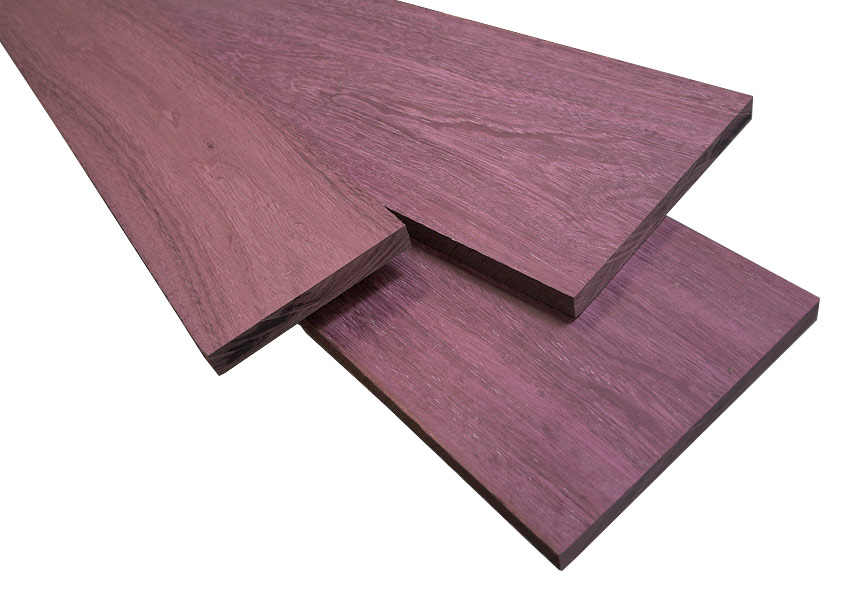
The Grape Popsicle of Woodworking Purple Heart Wood (Peltogyne spp
Peltogyne, commonly known as purpleheart, violet wood, amaranth and other local names (often referencing the colour of the wood) is a genus of 23 species of flowering plants in the family Fabaceae; native to tropical rainforests of Central and South America; from Guerrero, Mexico, through Central America, and as far as south-eastern Brazil. [2]

How Does Purple Heart Wood Change Color? Cormark International
Purpleheart wood comes from the purpleheart tree, which is a part of the Peltogyne genus consisting of 23 different species of big trees that are a part of the Fabaceae family. These trees are known for their small floral blooms consisting of five petals and pod-shaped fruit that contain a single seed.
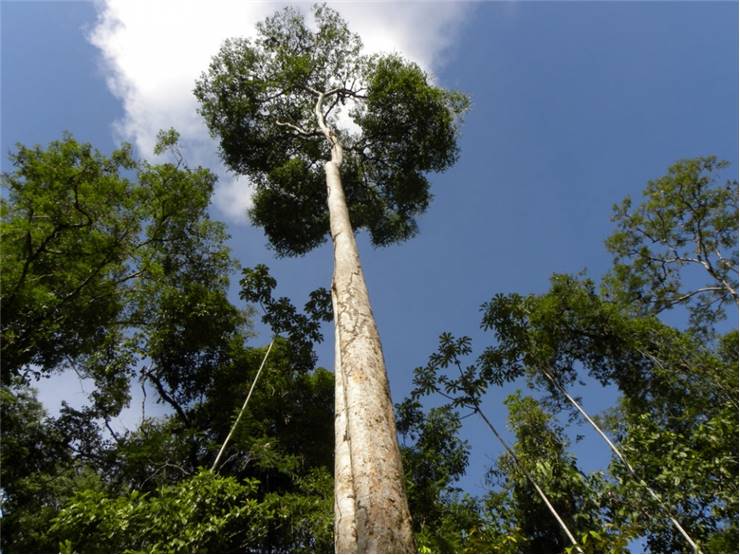
Purple Heart Tree
Purpleheart wood, often referred to as amaranth, violet wood, amendoim, peltogyne, and other names, grows throughout Central and South America, primarily in the Amazon Basin. Its prized for its unusual hue, which starts off as a medium brown color with faint purple accents, but deepens to an intense eggplant purple over time.

Purpleheart Exotic Wood & Purpleheart Lumber Bell Forest Products
x 4.13" x 49.06" Cracks. Worm tracks. Some curly figure. Skip planed. Add Purpleheart PURP1496 0.88"
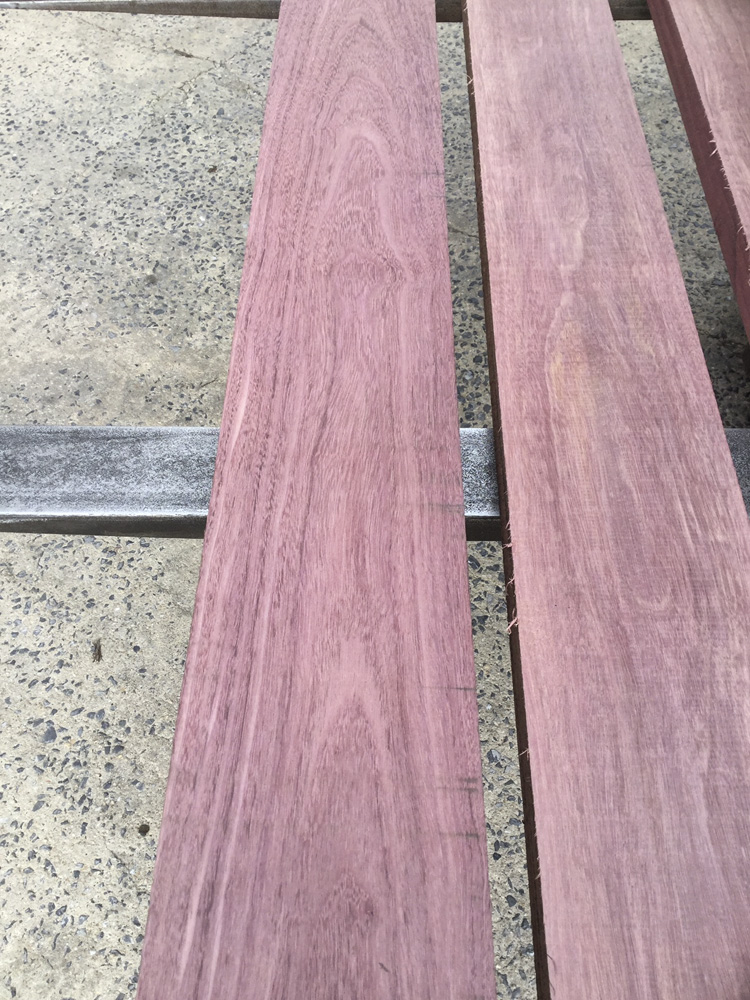
Purpleheart Lumber Hearne Hardwoods
Purple heart wood is a type of hardwood that is prized for its distinctive and striking deep purple color. The scientific name of the tree that produces purple heart wood is Peltogyne, and it is found primarily in Central and South America.

10 Most Expensive Wood Options for Interiors in 2021!
Purple heart wood is a hardwood species from a deciduous tree (i.e., one that sheds its leaves every autumn), also known as Amaranth, Roxinho, or Violetta. It is native to Central and South America and commonly found in Mexico down to southern Brazil.
⚡Amazing Purpleheart tree with purple wood ⚡ r/CantBelieveThatsReal
The Spruce / Heidi Kolsky Warning Purple heart is considered to be invasive in certain parts of the world, including Cuba, Puerto Rico, and portions of Mexico, but it is not invasive in the United States. Light Planting your purple hearts in full sun can help ensure that they grow the vibrant purple stems.
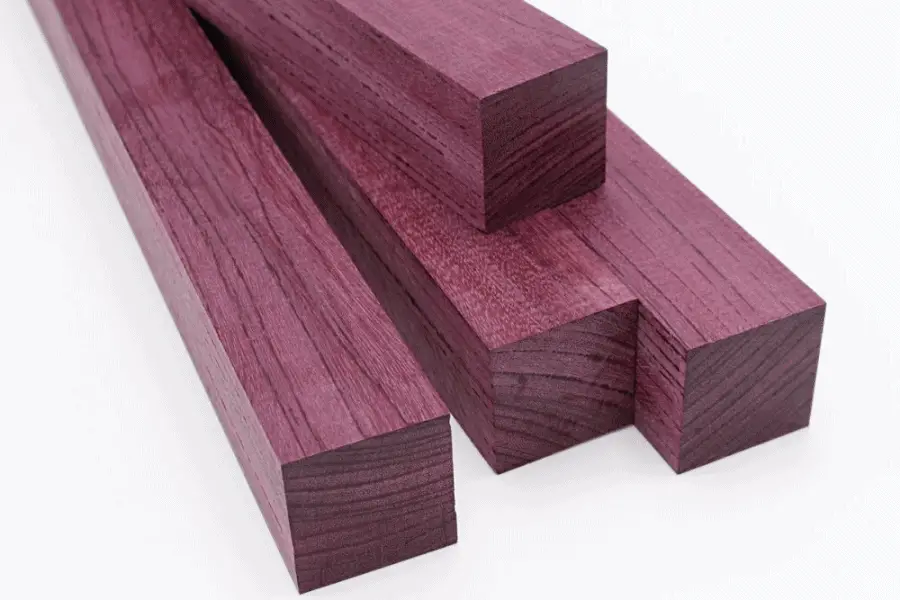
Purple Heart Wood Explained. All Questions Answered. Top Woodworking
Purpleheart is an incredibly strong and durable type of wood, originating from the Peltogyne genus of 23 species of large trees that can be found growing natively on the territory between Mexico and Brazil. It is best known for its amazing grain pattern and unique color that can rarely be found in other wood types.
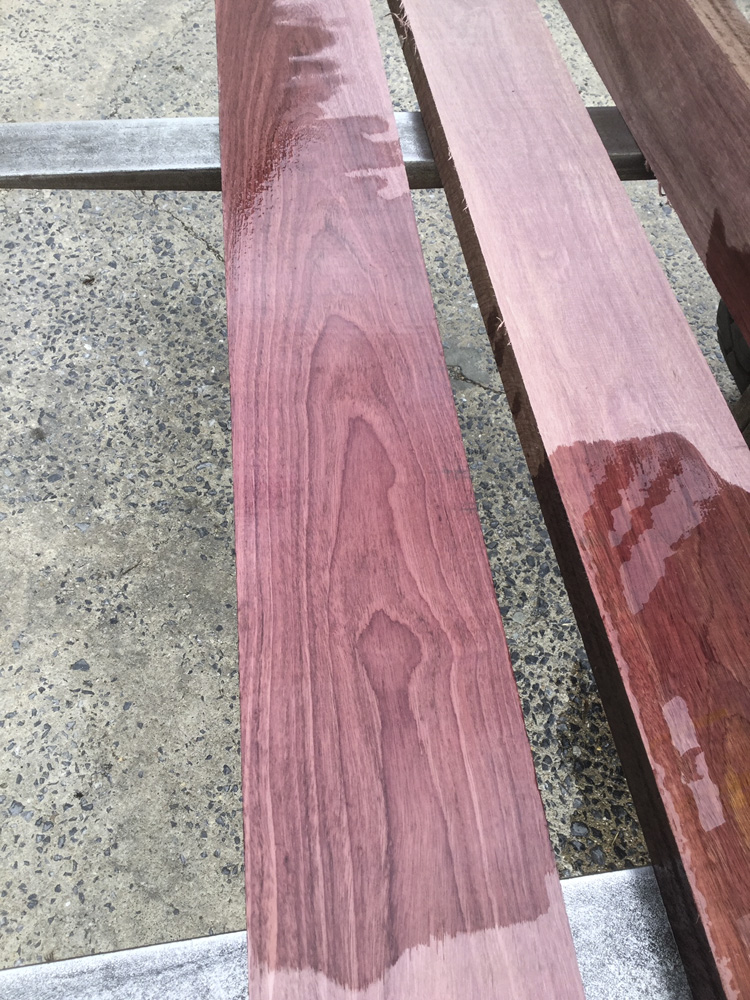
Purpleheart Lumber Hearne Hardwoods
Purpleheart wood is commonly used to manufacture durable furniture, paneling, and flooring. It's also used for structural elements such as columns, arches, industrial flooring, heavy construction, and even in boat manufacturing. Purpleheart is a highly in-demand wood, even though it remains costly, with prices rising constantly.

Avalonia eTrails America the Beautiful
Purpleheart lumber is a material you can derive from an exotic wood tree that's a part of Peltogyne. It's a genus with 23 species under the Fabaceae family that grows into massive trees. The Purpleheart lumber trees have a growth range of 100 to 170 ft with massive trunks that grow up to 1.5m in diameter.

Purpleheart wood??
Peltogyne purpurea is native to the Pacific coast of Costa Rica and Panama, and also the Atlantic coast of Colombia. [3] [4] It is a common canopy tree in rainforests 50-500 meters above sea level at sites with more than 2500 mm (98.5 in) rainfall per year and temperatures from 23 to 27 °C or 73 to 80 °F. It occupies sites with well-drained.

A question regarding purple wood. Purple heart wood, Wood, Mid
Purpleheart > Hardwoods > Fabaceae > Peltogyne > spp. Purpleheart (Peltogyne sp.) Common Name (s): Purpleheart, amaranth, roxinho, violeta Scientific Name: Peltogyne spp. Distribution: Central and South America (from Mexico down to southern Brazil) Tree Size: 100-170 ft (30-50 m) tall, 3-5 ft (1-1.5 m) trunk diameter
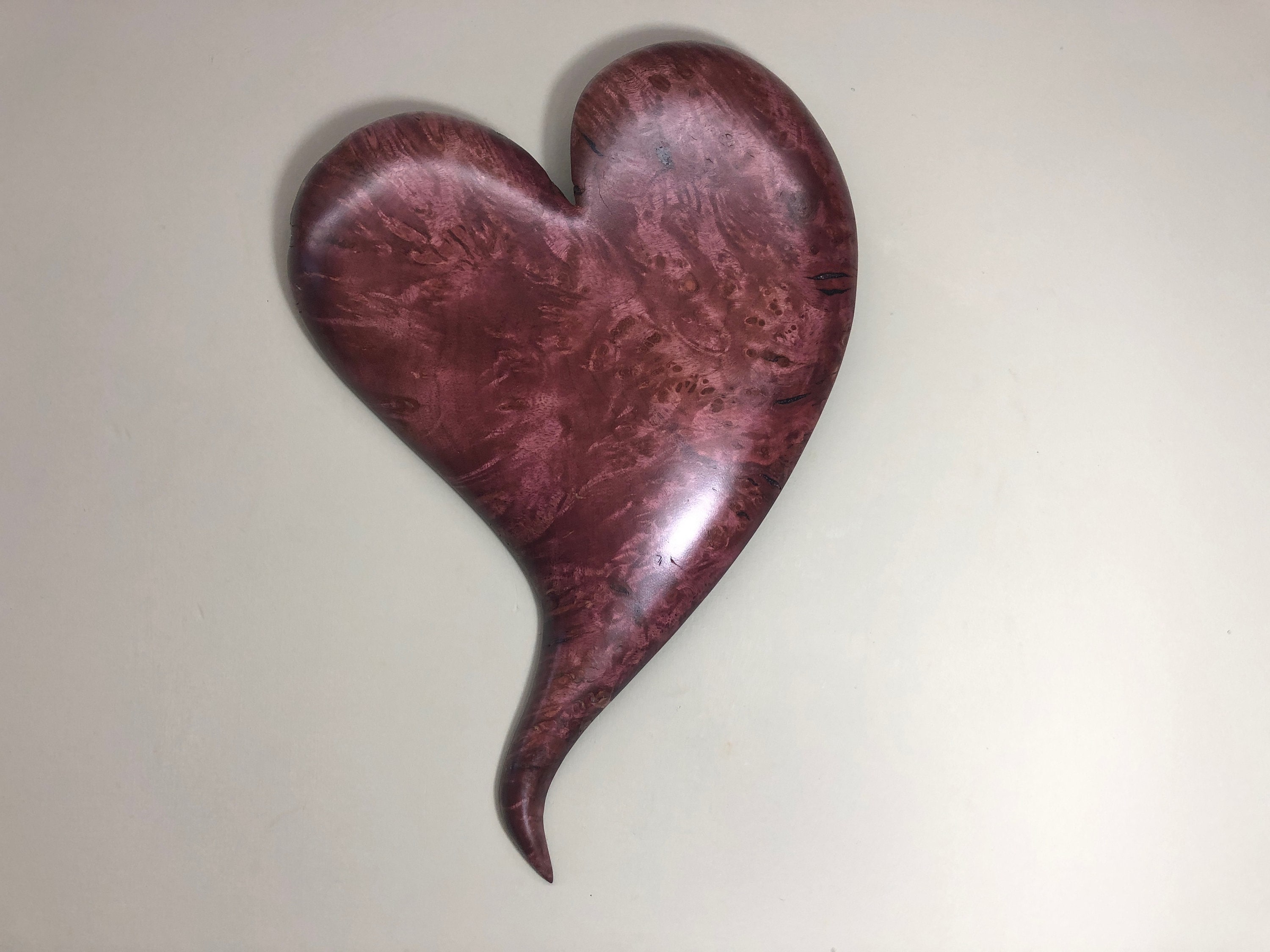
Purple heart tree wood chicksgulf
Purpleheart wood is one of the hardiest and most sturdy woods in the world. As it is extremely dense and watertight, it is also very resistant to decay and to attack by fungi, termites, and other insects. I wish my house was made of this stuff. 4. The Purpleheart Tree is Very Sustainable